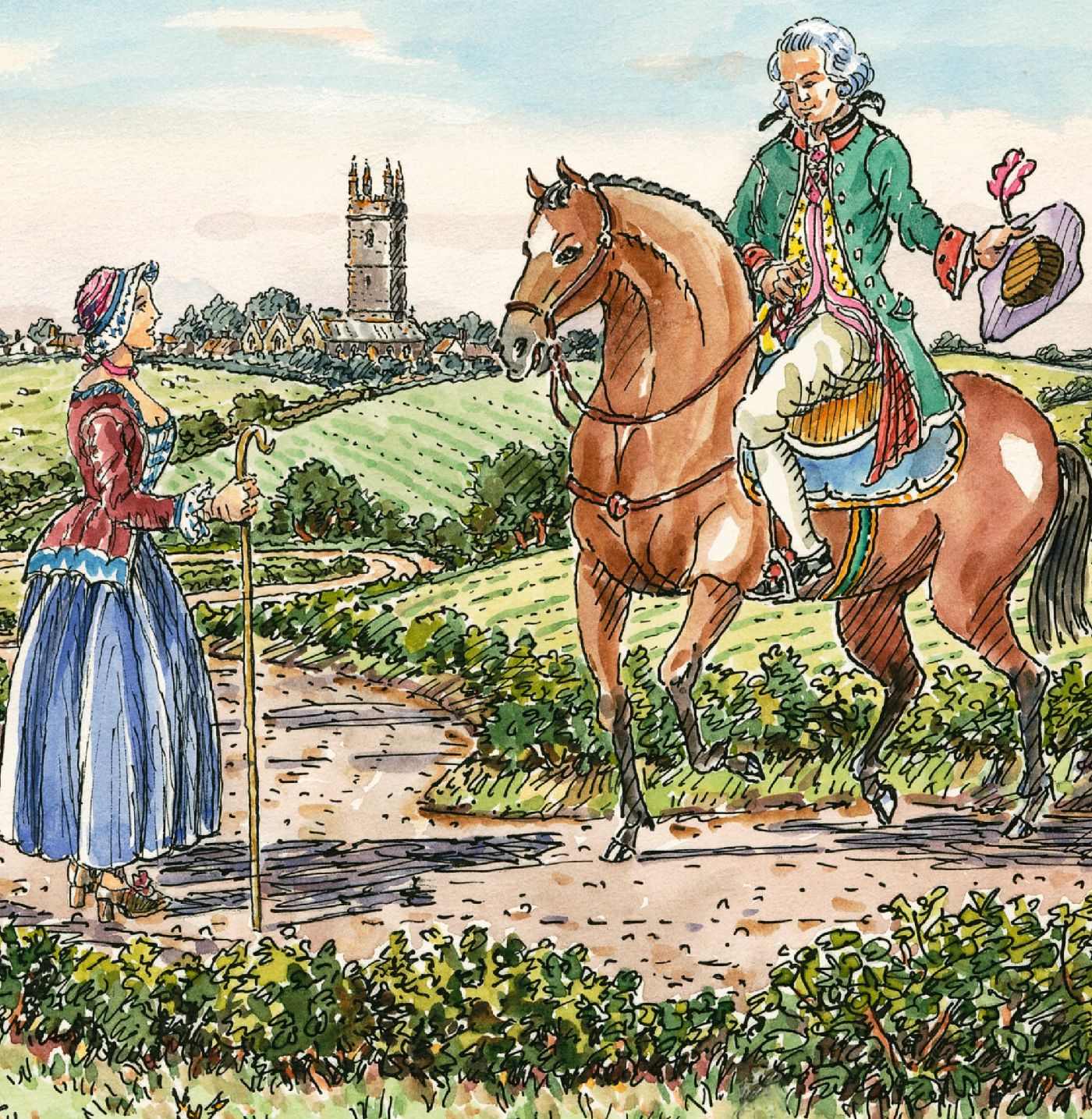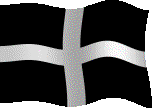c.1437 John Percival born near Macclesfield.
c. 1437 Thomasine Bonaventure probably born about the same time.
c. 1450 John Percival became a merchant tailor.
c. 1458 John Percival became a freeman of London.
1485-96 John Percival alderman of Vintry Ward.
1486 John Percival master of the merchant tailors (previously renter and upper warden of the same company).
1486-7 John Percival sheriff of London.
1487 John Percival knighted.
c. 1487 Living with his wife Dame Thomasine at 71 Lombard Street.
February 1487 Licence to Sir John Percival to export 500 quarters of corn (Wilson, op. cit., 276).
November 1488 Licence to him to import 100 gallons of wine from Gascony and Aquitaine (loc. cit.).
18 March 1494 will of Richard Bonaventure, rector of Chelsfield, Kent, 1463-93, brother of Dame Thomasine Percival.
1496-1503 Sir John Percival alderman of Langbourne Ward.
1498-1499 Sir John Percival mayor of London.
24 January 1500 Will of Richard Bonaventure proved at Lambeth.
21 February 1502 Sir John Percival made his will (Husting Court).
25 January 1503 Sir John Percival’s foundation deed of Macclesfield School.
4 March 1503 Sir John Percival made his (P.C.C.) will and ultima voluntas.
19 April 1503 Death of Sir John Percival.
29 May 1503 Sir John Percival’s will proved (P.C.C.).
24 June 1503 Sir John Percival’s will enrolled at the Husting Court of London.
8 October 1503 Inquisition post mortem of Sir John Pervical.
1504-5 Dame Thomasine bought houses in London to found a further chantry (in addition to Sir John Percival’s chantry) at St. Mary Wolnoth.
15 May 1506 Sir John Lisle of Thruxton, Hants., sold the manor of Simpson in Holsworthy to Dame Thomasine Percival.
21 June 1506 Discharge for purchase money (of Simpson) by Sir John Lisle.
Trinity Term 1506 recovery suffered by three trustees of Dame Thomasine of lands of endowment of Dame Thomasine’s deed of 10 July 1506. Followed by final concord to them to the uses of Dame Thomasine’s endowment deed (Sir John Lisle, kt. and his wife, Dame Mary, to John Bonaventure, Nicholas Dinham and John Snowe).
6 July 1506 Sir John Lisle’s quitclaim to Dame Thomasine’s three trustees.
10 July 1506 Dame Thomasine’s deed of endowment to found a chantry, obit and grammar school at Week St. Mary.
1 August 1506 The three trustees conveyed the endowment to 19 feoffees (names also in endowment deed of 10 July 1506).
12 August 1506 Seisin of estates given by Sir John Lisle’s attorneys to four of the feoffees on behalf of all the feoffees.
9 November 1507 Henry Thorne conveyed to Dame Thomasine Percival the manor of Bradworthy in Devon. (In her last will and testament of 10 April 1512 feoffees (similar to those of the endowment deed) were named to suffer a recovery against Henry Thorne to the use of Dame Percival’s last will. Her executors were to dispose of Bradworthy as they thought fit. It is clear that they gave it to the maintenance of Week St. Mary school.)
6 November 1508 Royal licence to alienate lands in mortmain for the endowment of the chantry of Thomasine Percival at Week St. Mary.
1 December 1508 Dame Percival granted to John Andrew, B.A., clerk, chaplain of Week St. Mary chantry, the manor of Simpson and Wicott (?Winnacott) in North Petherwin.
12 February 1509 Dame Thomasine Percival made her will (Husting Court).
24 March 1509 Notification by Dame Thomasine of royal licence of 1508 and grant to John Andrew of 1 December 1508.
26 March 1512 Dame Thomasine Percival made her (P.C.C.) will.
10 April 1512 Ultima voluntas and codicil to above will.
Between 10 April and 30 July 1512 Death of Dame Thomasine Percival.
30 July 1512 Dame Thomasine Percival’s will (P.C.C.) proved.
4 October 1512 Her will enrolled at the Husting Court of London.
1512 John Bonaventure mayor of Launceston.
10 April 1526 lease of part of the lands of endowment by David Smyth, former incumbent of the chantry of Thomasine Percival at Week St. Mary.
20 July 1529 Further lease of part of the endowment.
9 August 1529 David Smyth, M.A., instituted Vicar of Week St. Mary.
3 December 1533 Further lease of part of the endowment.
4 April 1535 Further lease of part of the endowment.
10 May 1535 Thomas Row’s (schoolmaster of Week St. Mary) lease of part of the manor of Simpson.
1536 Thomas Row occurs as schoolmaster.
1536 Dispute with the Bishop of Exeter about the tithes of Week St. Mary school.
1546 Chantry school at Week St. Mary a “great comfort to all the country” who sent their children to board there for free education.
1548 Week St. Mary School “utterly decayed”.
1548 School transferred to Launceston. Received allowance of £17 13s. 2Jd. from 20 July 1548 from crown revenues. William Cholwell may have gone to Launceston. The usher at Week St. Mary, George Spry and his wife Alice, the laundress, remained at Week.
1549 The chantry lands of Week St. Mary purchased by Nicholas and Roger Prideaux.
1552 Refoundation of Macclesfield school.
1555 John Spry, “minister of the chantry of St. John the Baptist at Week St. Mary” in receipt of a pension of £3 6s. 8d.
1564 Guild of merchant tailors refused to sell the Percivals’ house, 71 Lombard Street to the corporation of London for Gresham’s Royal Exchange (Wilson, op. cit., 176).
1570 Stephen Gourge ex-schoolmaster of Launceston and incumbent of St. Mary Magdalene (and formerly sub-prior of Launceston Priory) still living at St. Thomas by Launceston with two former canons of the Priory.
1674 The Merchant Tailors sold 71 Lombard Street to meet forced loans (Wilson, loc. cit.).
1725 John Prideaux sold the manor of Simpson to Thomas Pitt, first Lord Londonderry. His sister carried the estate to James Stanhope in marriage.
1910 Holsworthy estate (including the manor of Simpson) sold by the 7th Earl Stanhope.
1938 Macclesfield School became the King’s School, Macclesfield.
1971 Deed of endowment of Week St. Mary School acquired by Sotheby’s.
10 July 1972 sold at Sotheby’s (Lot 25).
13 October 1972 Decision of the Reviewing Committee on the Export of Works of Art prevented its export to the U.S.A.
16 November 1972 purchased by Cornwall County Record Office with the aid of a grant from the Friends of the National Libraries.

